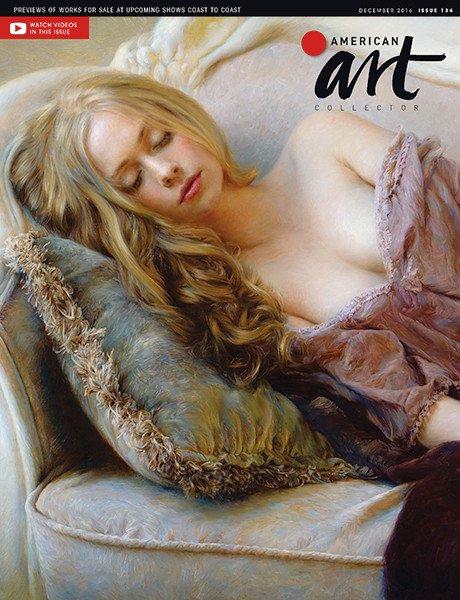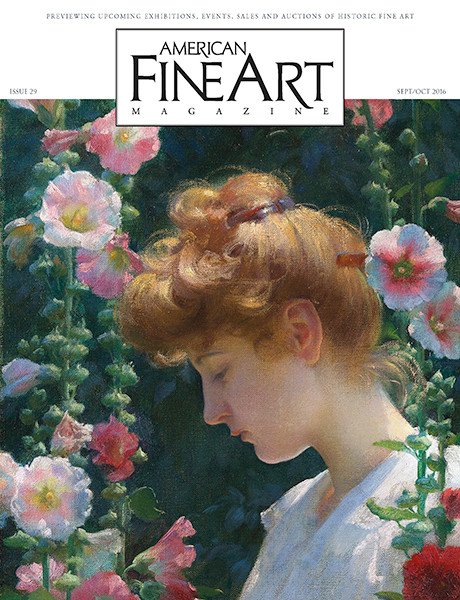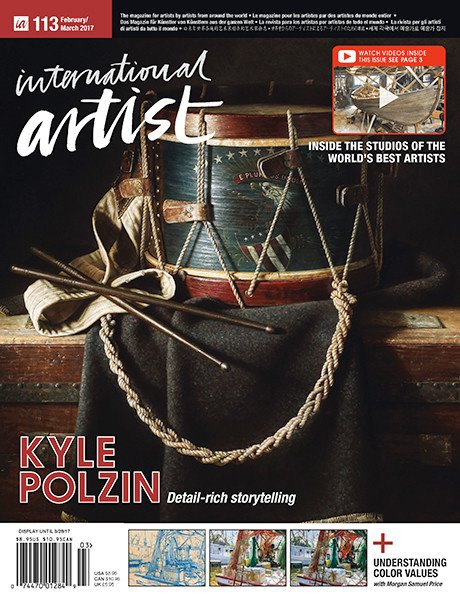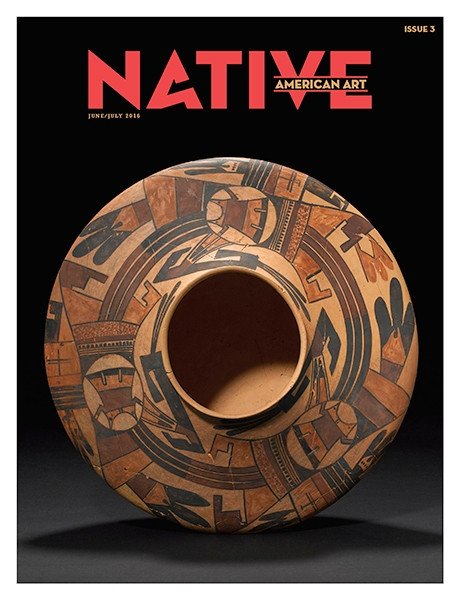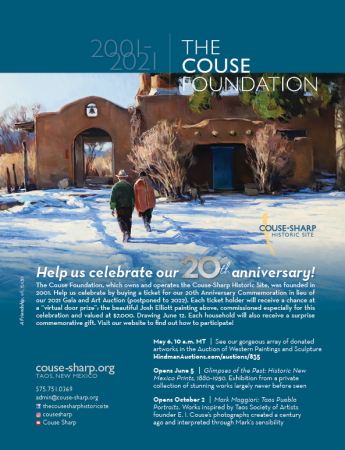The Couse Foundation
The Lunder Research Center, Couse-Sharp Historic Site138 Kit Carson Road
TAOS, NM 87571
5757510369
Email this Gallery
Visit Gallery Website
Hindman Western Paintings and Sculpture Session I: The Couse Foundation lots 182-205, HindmanAuctions.com/auctions/835
5/6/2021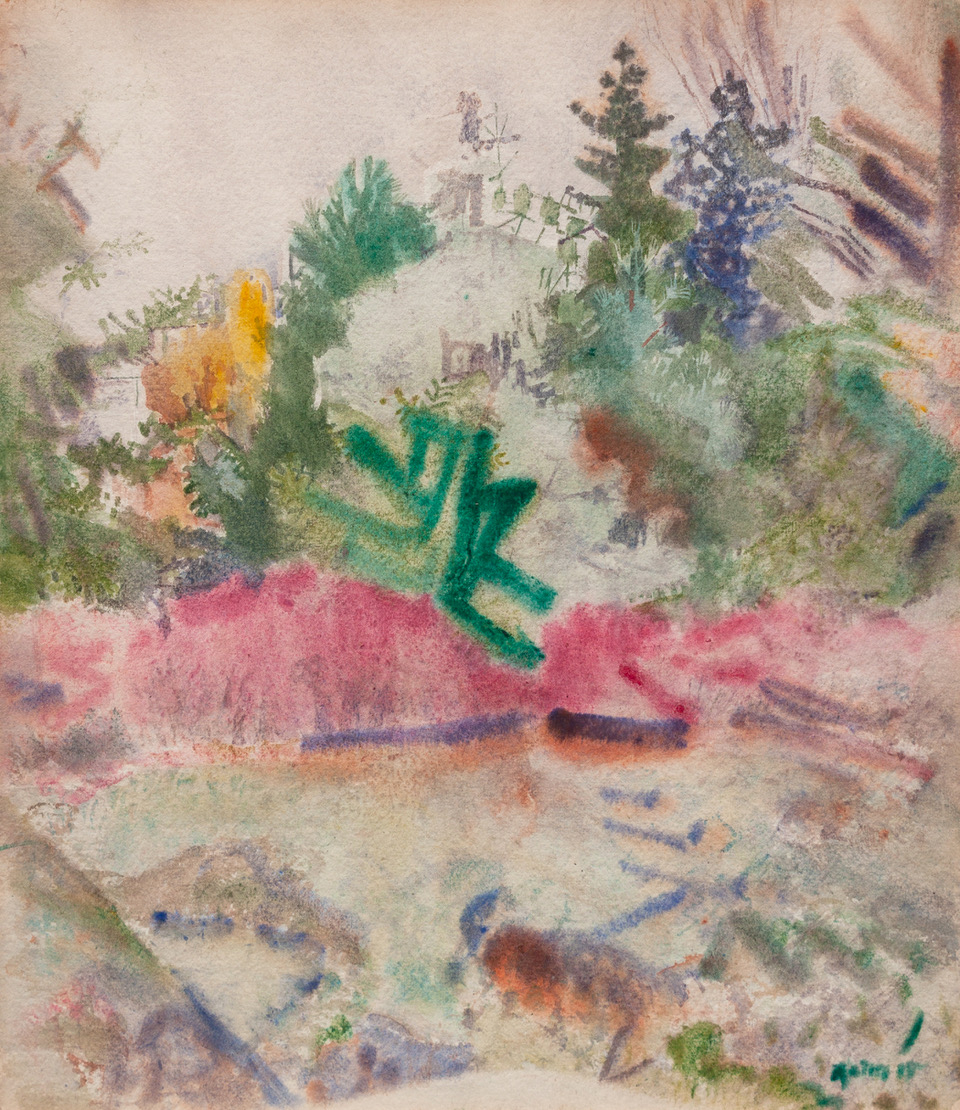
Autumn in Mist
John Marin
Watercolor
19.25 x 16.25 inches (L x W)
https://hindmanauctions.com/auctions/835
Lot 182
From the catalog:
1918
John Marin (American, 1870-1953)
signed Marin and dated (lower right)
Property being sold to benefit the Mission and Vision of the Couse-Sharp Historic Site, Taos, New Mexico
Provenance: Kennedy Galleries, New York, New York; Sotheby’s, New York, New York, 1990; Private Collection, acquired at auction from the above
Exhibitions: The Berkshire Museum, “John Marin’s Berkshire Landscapes”, Pittsfield, Massachusetts, 1985
Despite having found a lifelong New York dealer in Alfred Steiglitz, and despite having exhibited with Picasso and just about every other name in Modernism in the 1913 Armory Show, John Marin spent the summer of 1918 in Rowe, Massachusetts, in large part because he found living there inexpensive. Yet the environs were so congenial to his painting that he stayed well into the fall, which is when he would have painted Autumn in Mist--not long perhaps, before Armistice Day began to clear the tragic fog of the First World War. Marin is an idiosyncratic painter. His subtle watercolors seem to have an origin in Asian practice, but they are utterly unique, as if his brushwork inscribes the calligraphy of a private language. The central gesture in Autumn in Mist, for example, is what appears to be the skeleton of a shrub, dimly perceived. The arrangement of green limbs, however, suggests a ghostly, dancing figure that might loom anciently from a cave wall. As Sheldon Reich wrote in his 1970 treatise on Marin, the artist embodied “some of the most cogent artistic tendencies of his day: the twentieth-century concentration on individual expression, the shattering of conventional standards of time and space, the faith in the act of creation as one of affirmation.” (Reich, p. 243).
-James D. Balestrieri
est $15,000-25,000
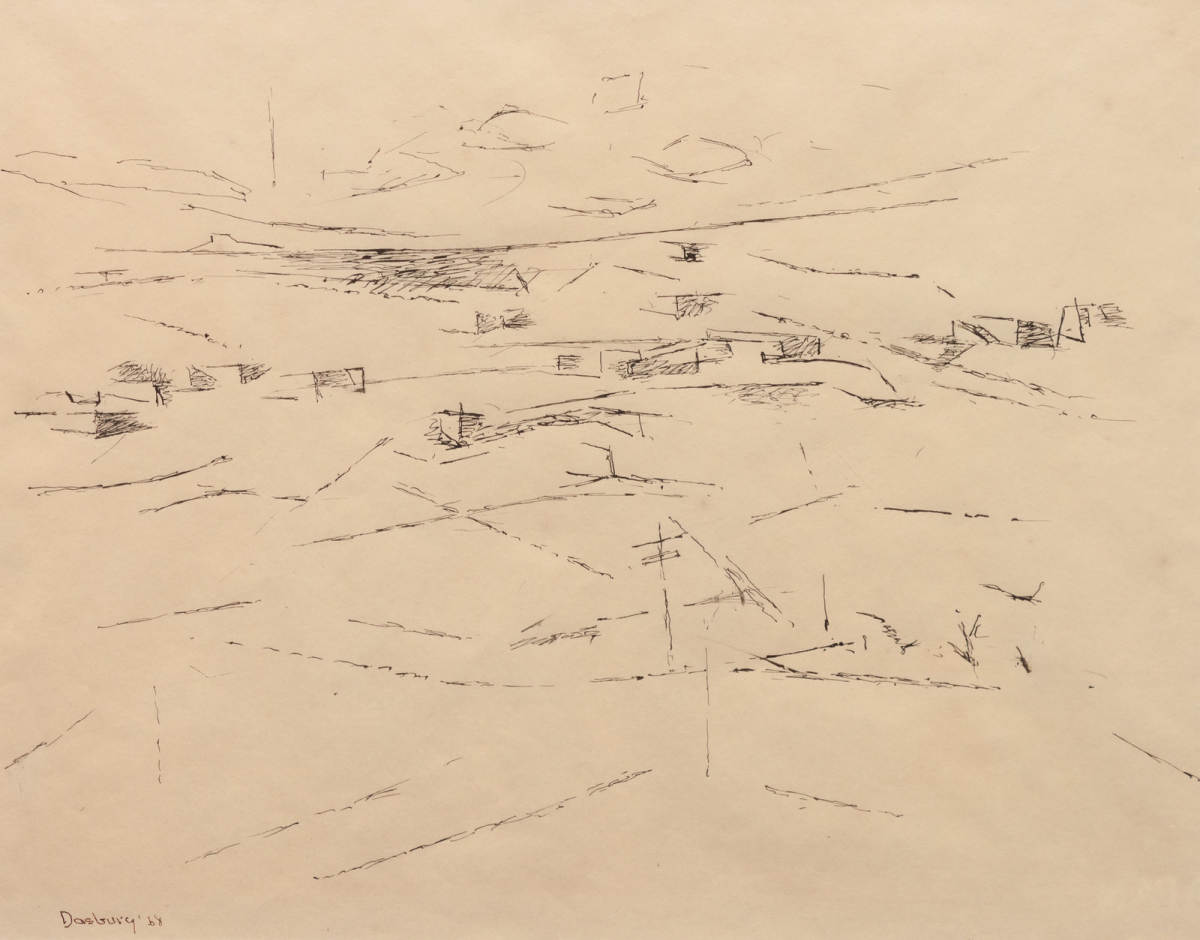
Cordillera
Andrew Dasburg
pen and ink on paper
16.5 x 21 inches (L x W)
https://hindmanauctions.com/auctions/835
Lot 185
From the catalog:
Andrew Michael Dasburg (American, 1887-1979)
1968
signed Dasburg and dated (lower left)
Property being sold to benefit the Mission and Vision of the Couse-Sharp Historic Site, Taos, New Mexico
Provenance: The Artist; The Collection of Robert Ellis, student of the artist; Donated by Rosa Ellis Clark, widow of the artist, and 203 Fine Art, Taos, New Mexico
Exhibitions: University Art Museum, The University of New Mexico in Albuquerque, “Exhibition of Drawings by Andrew Dasburg”, 1964
Andrew Dasburg rejected his traditional training, seeing the future of art in Cubism when he studied in Paris, and adopting Cezanne as his inspiration. Dasburg brought these ideas to Taos and shook things up with his powerful Modernist sensibility. In Cordillera, or “Mountain Range,” Andrew Dasburg is sketching what he always sought in his art: the deep geometry of the universe. Here are the edges: of cloud and mountains, rock and shadow—the mathematics of nature in a formula determined over millennia. Your eye glides from broken line to broken line while your mind’s eye creates mass and envisions a scene.
-James D. Balestrieri
est $1,500-2,500
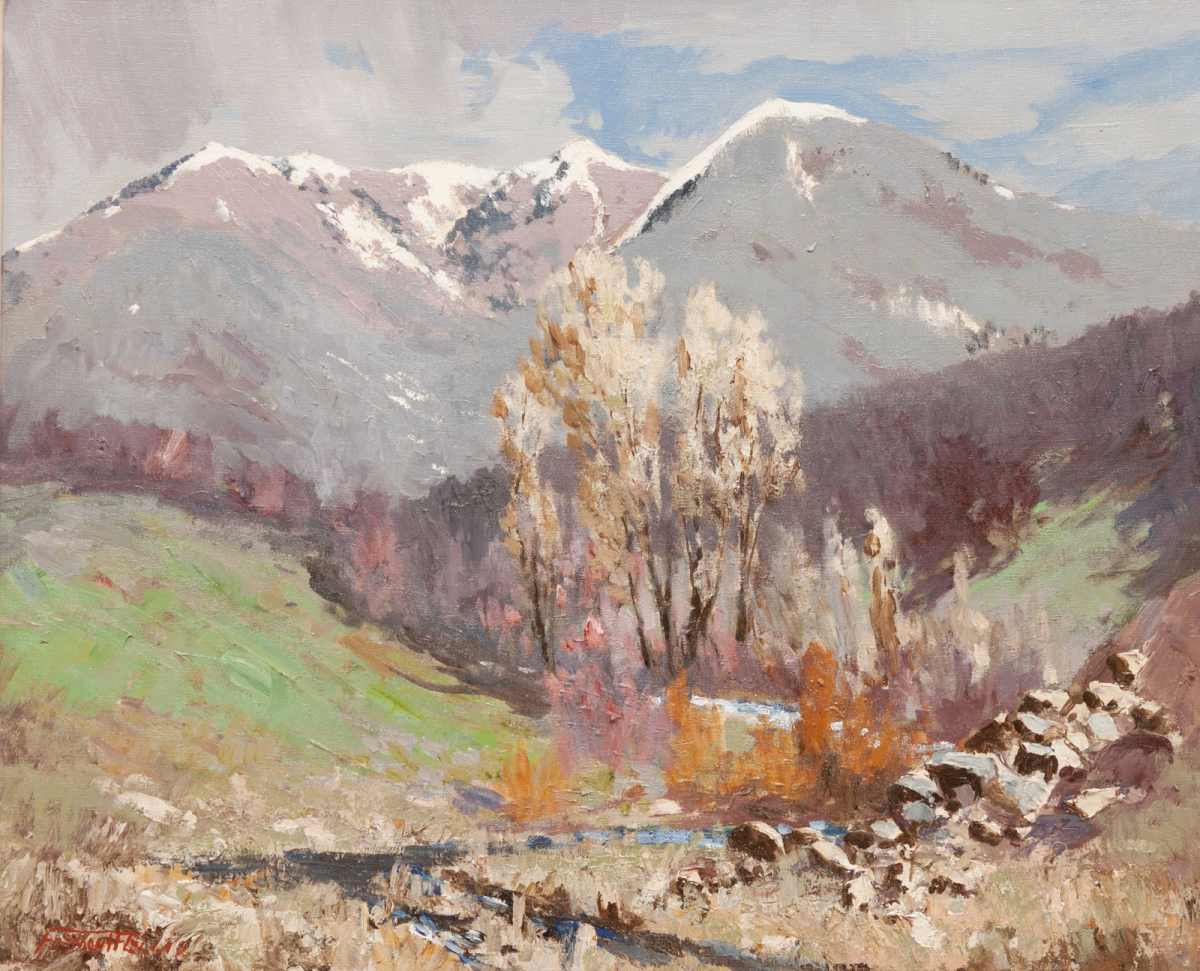
Early Spring-New Mexico
Fremont Ellis
oil on canvas
20 x 24 inches (L x W)
https://hindmanauctions.com/auctions/835
Lot 188
From the catalog:
Fremont Ellis (American, 1897-1985)
signed Fremont Ellis (lower left)
Property being sold to benefit the Mission and Vision of the Couse-Sharp Historic Site, Taos, New Mexico
Provenance:
Dan May & Associates, Scottsdale, Arizona; Private Collection, acquired from the above in 1992
Optometry and photography are both concerned with the eye, with sharpening vision and offering new points of view. Fremont Ellis had worked in both fields before taking up art. Ellis would become the best known of Los Cinco Pintores--Santa Fe’s answer to the Taos Founders--and in Early Spring-New Mexico, we see his unmistakable style: strong composition that leads the eye from element to element, balanced by easy brushwork and bold application of paint. Despite his interest in seeing, Ellis wants you to feel the day: winter abating; spring pulsing.
-James D. Balestrieri
est $8,000-12,000
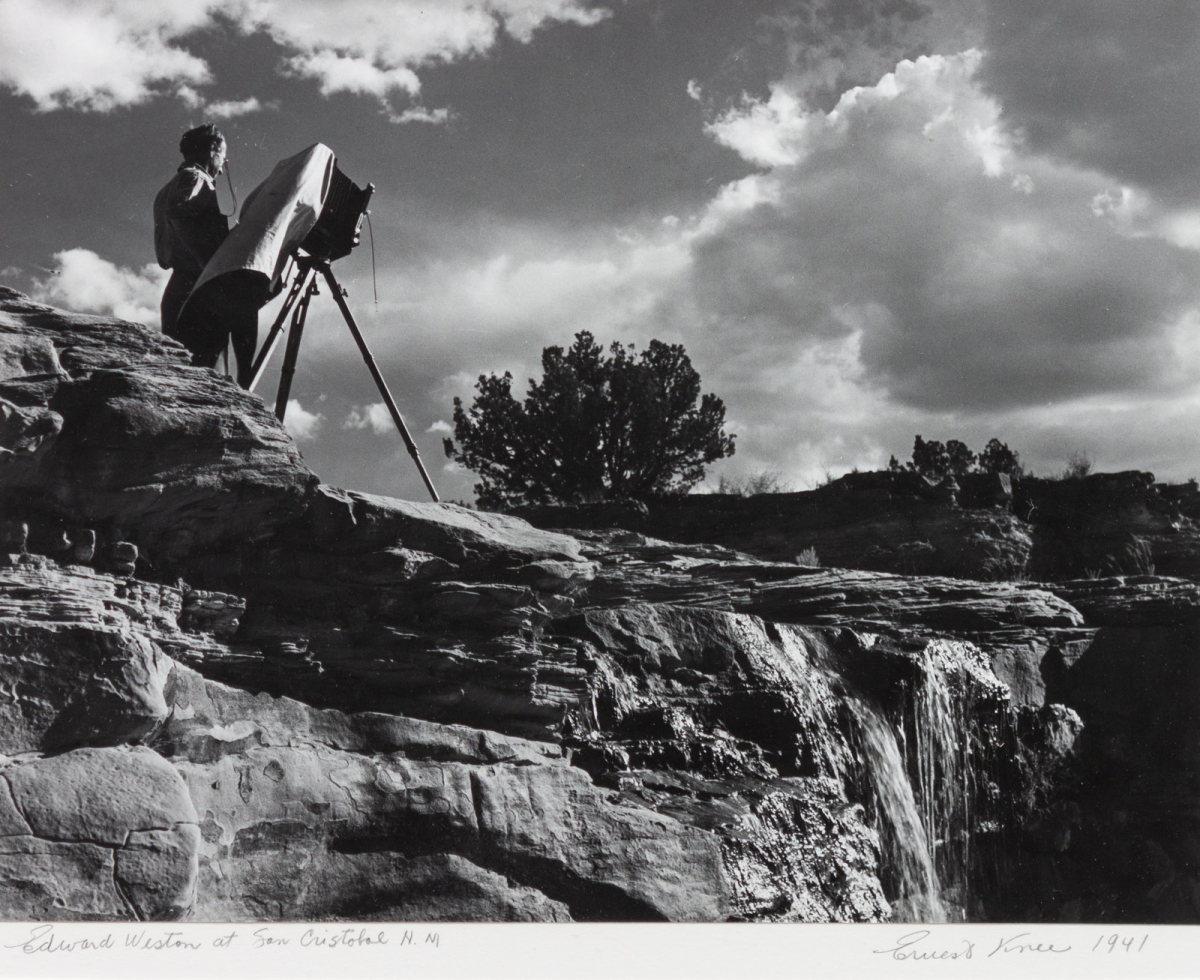
Edward Weston at San Cristobal, N.M.
Ernest Knee
gelatin silver print
10.25 x 13.25 inches (L x W)
https://hindmanauctions.com/auctions/835
Lot 202
Ernest Knee (Canadian/American, 1907-1982)
1941
signed Ernest Knee and dated (lower right); titled (lower left); titled, dated, inscribed #11, and stamped (verso)
Property being sold to benefit the Mission and Vision of the Couse-Sharp Historic Site, Taos, New Mexico
Provenance:
Private Collection
Canadian born Ernest Knee settled in New Mexico after working as Howard Hughes’s personal photographer when Hughes was daredeviling around the globe. Knee knew many, if not all, of the great New Mexico artists and often photographed their works for them. Here, one great photographer photographs another great photographer, Edward Weston, set up beside a small spill of water over rocks. Weston takes in the scene and waits for the right moment of light. By making Weston an element in his own photograph, Knee suggests that compositions are to be found everywhere, if we only look.
-James D. Balestrieri
est $700-900
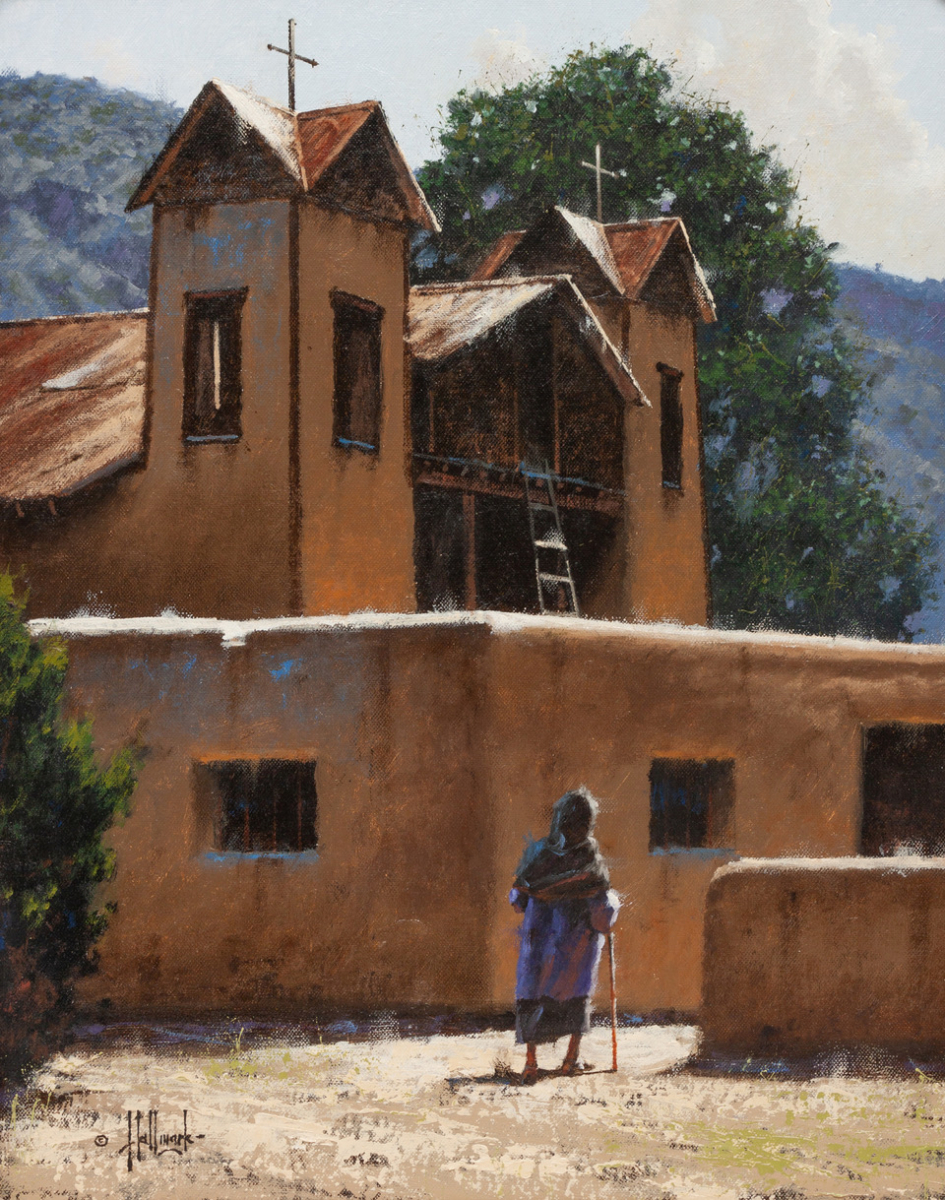
Faith
George Hallmark
oil on board
20 x 16 inches (L x W)
https://hindmanauctions.com/auctions/835
Lot 198
From the catalog:
George Hallmark (American, b. 1949)
signed Hallmark (lower left)
Property being sold to benefit the Mission and Vision of the Couse-Sharp Historic Site, Taos, New Mexico
Provenance:
Donated from a Private Collection
Texas painter George Hallmark began his career in commercial art before moving to easel painting. His work is regularly featured in the Masters of the American West at the Autry National Center and the Prix de West. Hallmark’s paintings hang in the collections of the Eiteljorg Museum, the Booth Western Art Museum, the Briscoe Museum, and the U.S. Capitol. Faith takes some inspiration from the art of Clark Hulings. Hallmark, like Hulings, traveled to Spain and France to paint village life and the continuity of the church, as implied in Faith, is as central to traditional culture there, as it is in the American Southwest and Mexico.
-James D. Balestrieri
est $5,000-7,000
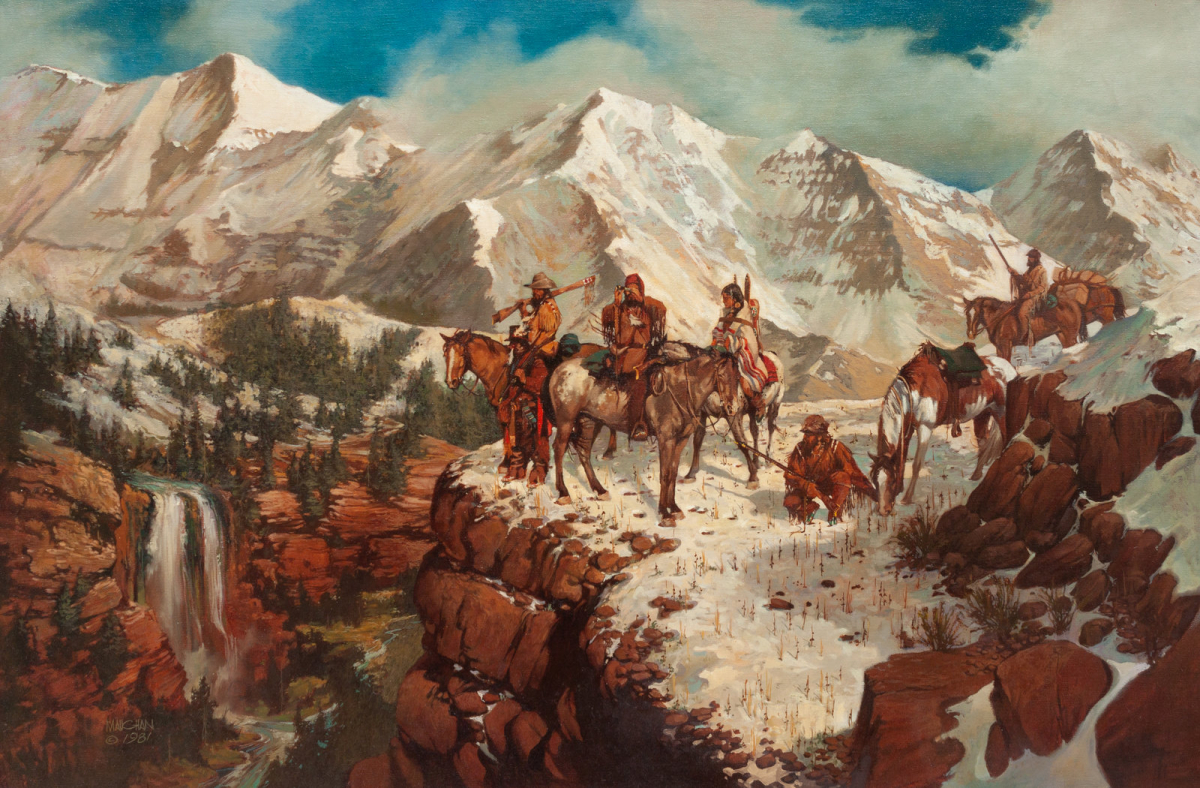
First Light
William Maughan
oil on canvas
32 x 48 inches (L x W)
https://hindmanauctions.com/auctions/835
Lot 200
From the catalog:
William Maughan (American, b. 1946)
1981
signed Maughan and dated (lower left)
Property being sold to benefit the Mission and Vision of the Couse-Sharp Historic Site, Taos, New Mexico
Provenance: Dan May & Associates, Scottsdale, Arizona; Private collection, acquired from the above in 1993
William Maughan is a commercial illustrator, easel painter, and serves as head of the Fine Art Department at the San Francisco Academy of Art College. Maughan advocates for a return to teaching traditional, academic realism. His own paintings, especially those of the historic West, take a more romantic approach. First Light hearkens back to the Golden Age of Illustration, depicting a moment in a larger narrative of adventure in the early West.
-James D. Balestrieri
est $2,000-3,000
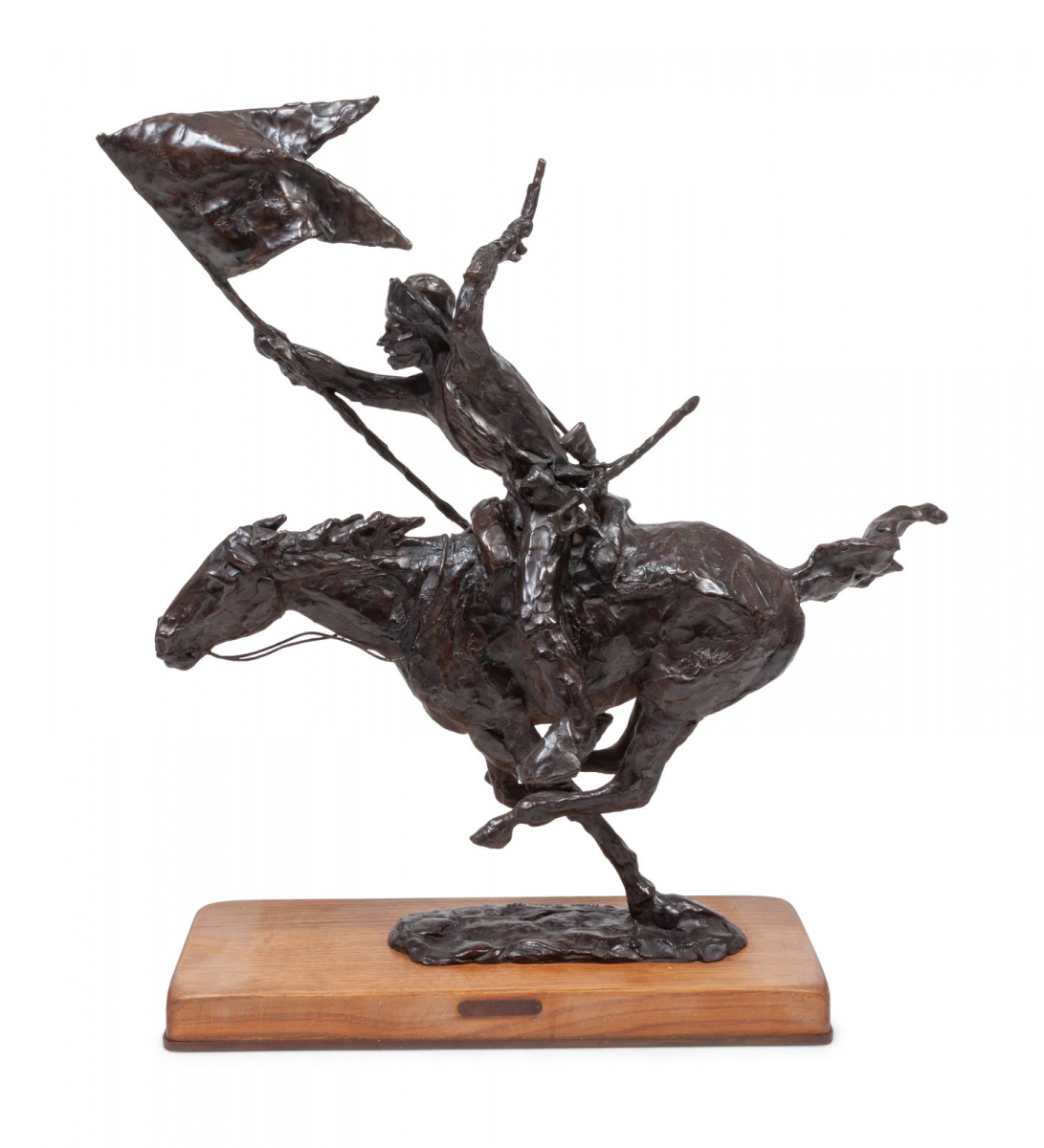
Flag Bearer-Study
Harry Jackson
bronze
25.5 x 25.5 x 10 inches (L x W x D)
https://hindmanauctions.com/auctions/835
Lot 199
From the catalog:
Harry Jackson (American, 1924-2011)
signed Harry Jackson and dated (base)
Property being sold to benefit the Mission and Vision of the Couse-Sharp Historic Site, Taos, New Mexico
Provenance: Dan May & Associates, Scottsdale, Arizona; Private Collection, acquired from the above in 1997
Harry Jackson polychromed some of his bronzes because that is what the ancients did. He sculpted others as if they were on the high wire because a good sculptor should have a thorough understanding of form, weight, and balance. That is where Jackson did his best work--on the high wire where action, emotion, and imagination collide. The Flag Bearer-Study is, in some ways, even more of an action piece than the Flag Bearer proper. This is how you would see the rider go by: in a blur, without much detail, all motion, breeze, sound.
-James D. Balestrieri
est $12,000-18,000
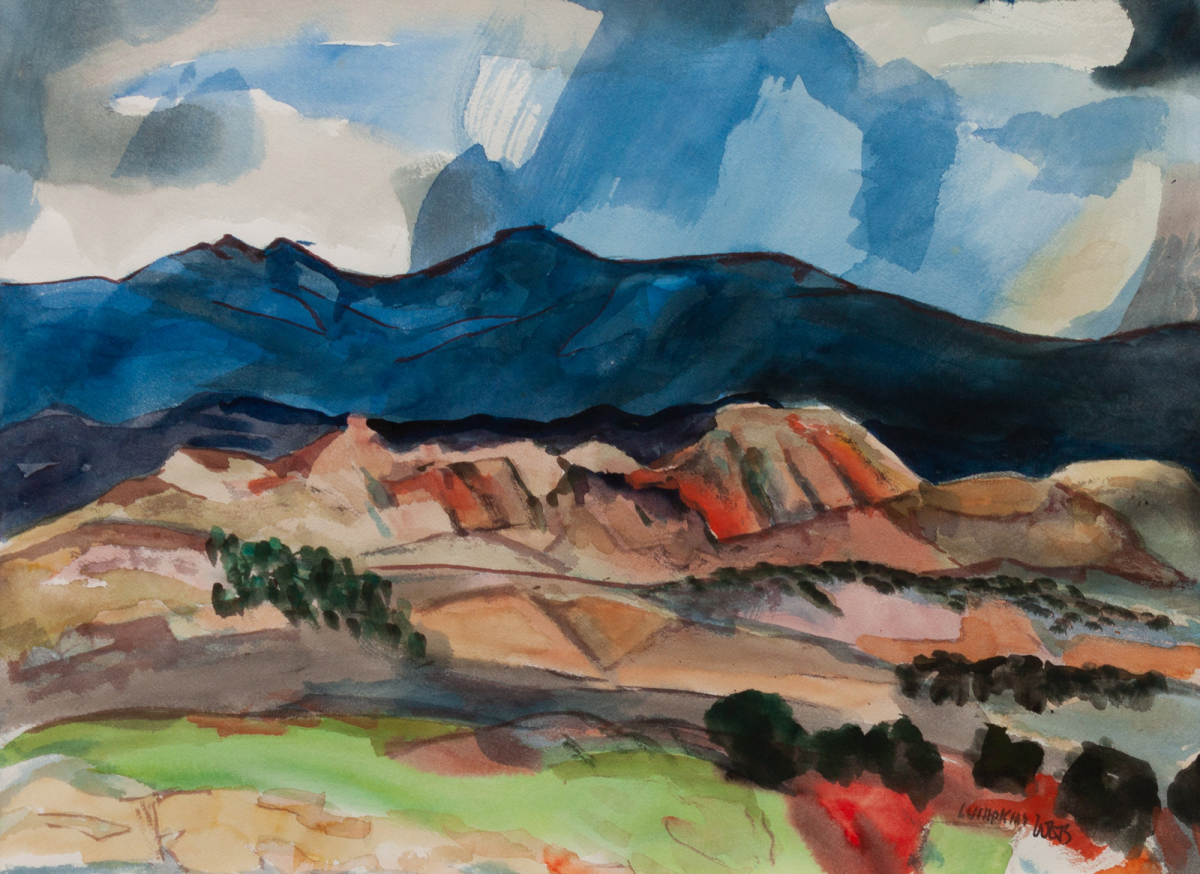
High Desert Series, Azul
William Lumpkins
watercolor on paper
17.75 x 23.5 inches (L x W)
https://hindmanauctions.com/auctions/835
Lot 183
From the catalog:
William Lumpkins (American, 1908-2000)
1973
signed Lumpkins (lower right)
Property being sold to benefit the Mission and Vision of the Couse-Sharp Historic Site, Taos, New Mexico
Provenance: Donated by Addison Rowe Gallery, Santa Fe, New Mexico
New Mexico artist William Lumpkins studied and painted with Peter Hurd in his early years, but it was seeing an exhibition of John Marin’s watercolors in Taos that pushed him towards abstraction. His time with the Transcendental Painting Group and Raymond Jonson helped shape his style, and an abiding interest in Buddhism made him an early advocate of sustainable living and solar architecture. You can see hints of Marin’s influence in High Desert Series, Azul as Lumpkins finds and brings out the abstraction in the landscape, presenting it in essential, kinetic forms.
-James D. Balestrieri
est $2,000-4,000
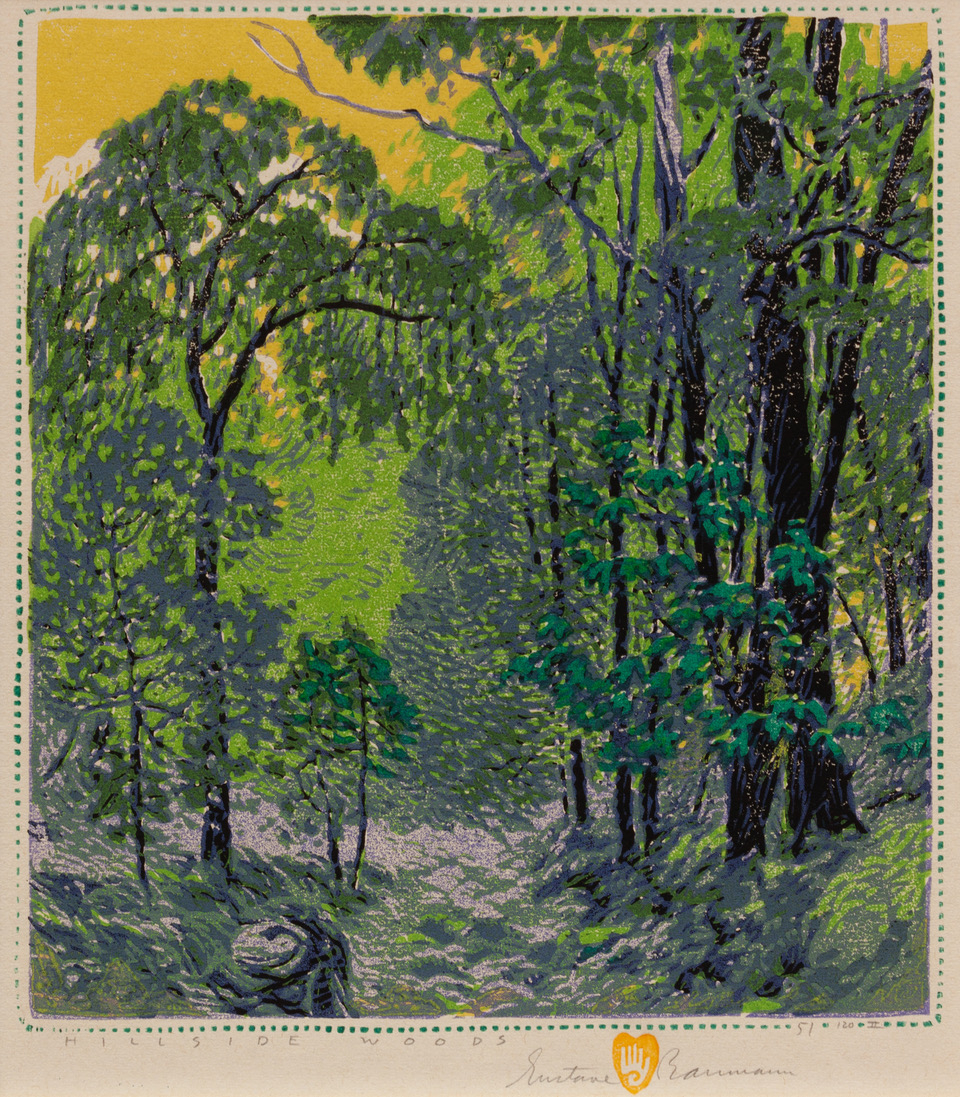
Hillside Woods II
Gustave Baumann
woodcut
10.5 x 9.5 inches (L x W)
https://hindmanauctions.com/auctions/835
Lot 186
From the catalog:
Gustave Baumann (American, 1881-1971)
edition 51/120
signed Gustave Baumann and numbered (lower right), titled (lower left)
Property being sold to benefit the Mission and Vision of the Couse-Sharp Historic Site, Taos, New Mexico
Provenance: Donated by Zaplin Lampert Gallery, Santa Fe, New Mexico
German-born Gustave Baumann learned the art of the color woodcut in Munich. He perfected his technique at the Brown County Art Colony in Indiana before settling in Santa Fe. Hillside Woods II is a wonderful example of both the artform and of his work. The layers of detail and subtle depths have rarely been achieved to this degree in the woodcut. Baumann employs differently shaped cuts to delineate the various depths and enhances these with greens that move along the spectrum. Black verticals and curves create a rhythm while grey shadowed light balances the yellow light of the sky.
-James D. Balestrieri
est $5,000-7,000
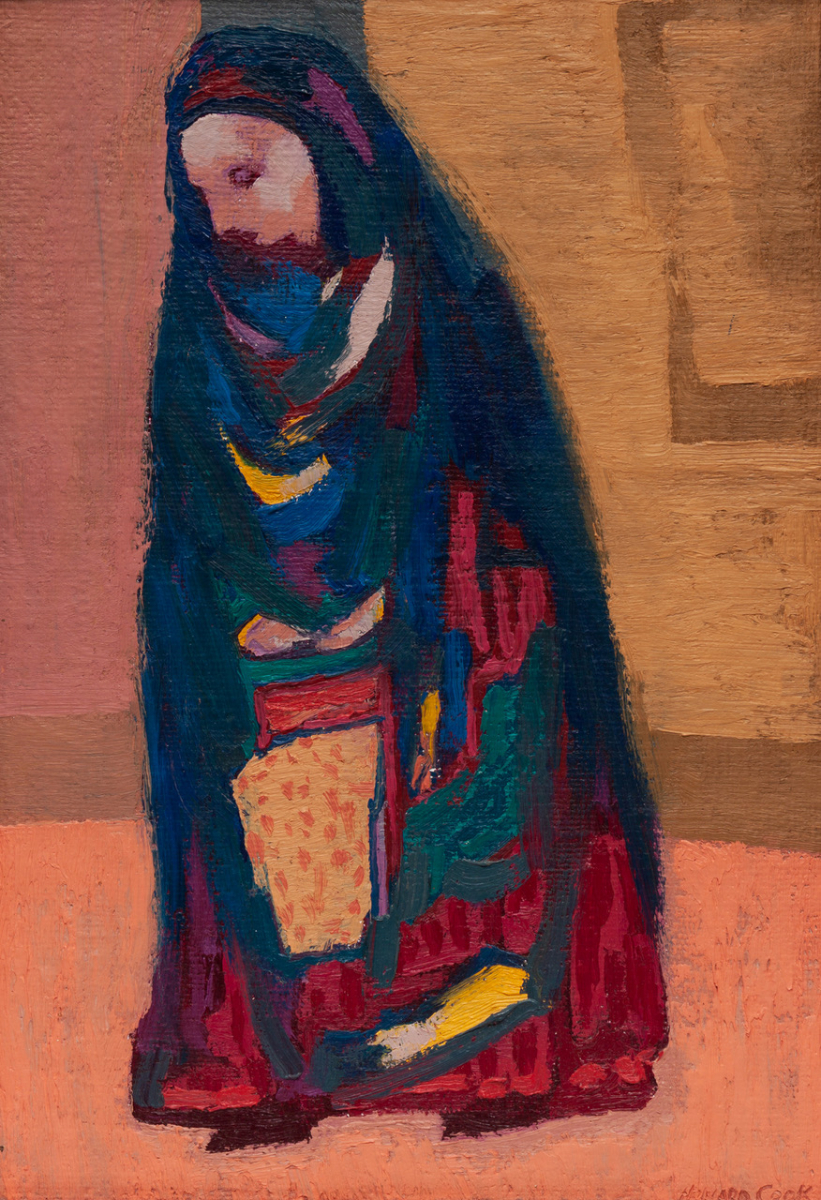
Little Grandmother
Howard Norton Cook
oil on burlap and board
20 x 14 inches (L x W)
https://hindmanauctions.com/auctions/835 Lot 184
From the catalog:
Howard Norton Cook (American, 1901-1980)
signed Howard Cook (lower right)
Property being sold to benefit the Mission and Vision of the Couse-Sharp Historic Site, Taos, New Mexico
Provenance: Donated by Chimayo Trading Del Norte, Ranchos De Taos, New Mexico
Howard Cook’s paintings never stray far from the wood engraving and printmaking he absorbed from Joseph Pennell. He treats the brush as a chisel, leaving out what is unnecessary and carving what is absolutely essential to his expression. But Cook was also an accomplished muralist, and something of that practice inheres in Little Grandmother as well. The simplicity in the folds of the garment, in the old woman’s face, and in the background recall woodcuts, while the deep blues echo stained glass and the pinks and yellows recall Giotto’s Paduan frescoes.
-James D. Balestrieri
est $3,000-5,000
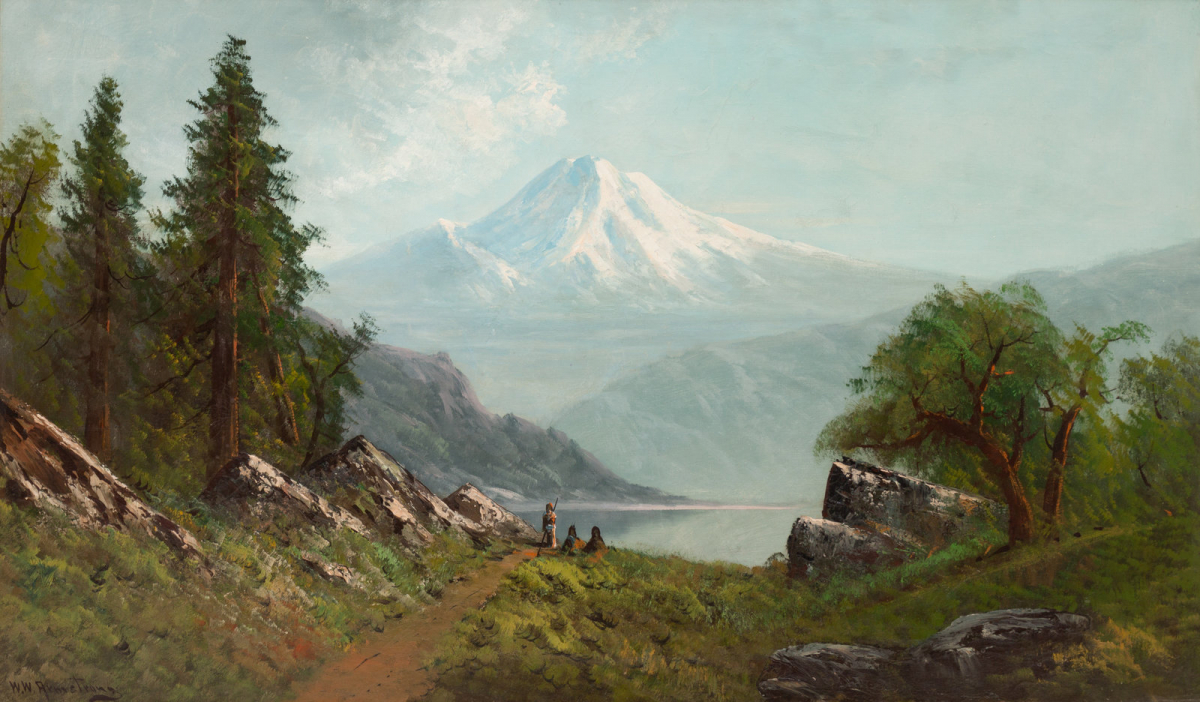
Oregon Landscape
William Weaver Armstrong
oil on canvas
30 x 50 inches (L x W)
https://hindmanauctions.com/auctions/835 Lot 187
From the catalog:
William Weaver Armstrong (American, 1862-1906)
signed W.W. Armstrong (lower left)
Property being sold to benefit the Mission and Vision of the Couse-Sharp Historic Site, Taos, New Mexico
Provenance: Zaplin Lampert Gallery, Santa Fe, New Mexico; Donated by Medicine Man Gallery, Tucson, Arizona
Little is known about William Weaver Armstrong, the artist who painted the grand Oregon Landscape pictured here. Armstrong’s father was a painter and William’s only instructor. Armstrong himself traveled and painted in California and the Pacific Northwest, contracted tuberculosis, and died at the age of 44. Oregon Landscape invites comparison with Thomas Hill, though Armstrong’s work has more of a Hudson River flavor than Hill’s California landscapes. Tighter drawing, attention to detail, and the romantic framing of the figures and mountain suggest William Frerichs or Herman Herzog. Armstrong is an artist who deserves more attention and investigation.
-James D. Balestrieri
est $2,000-3,000
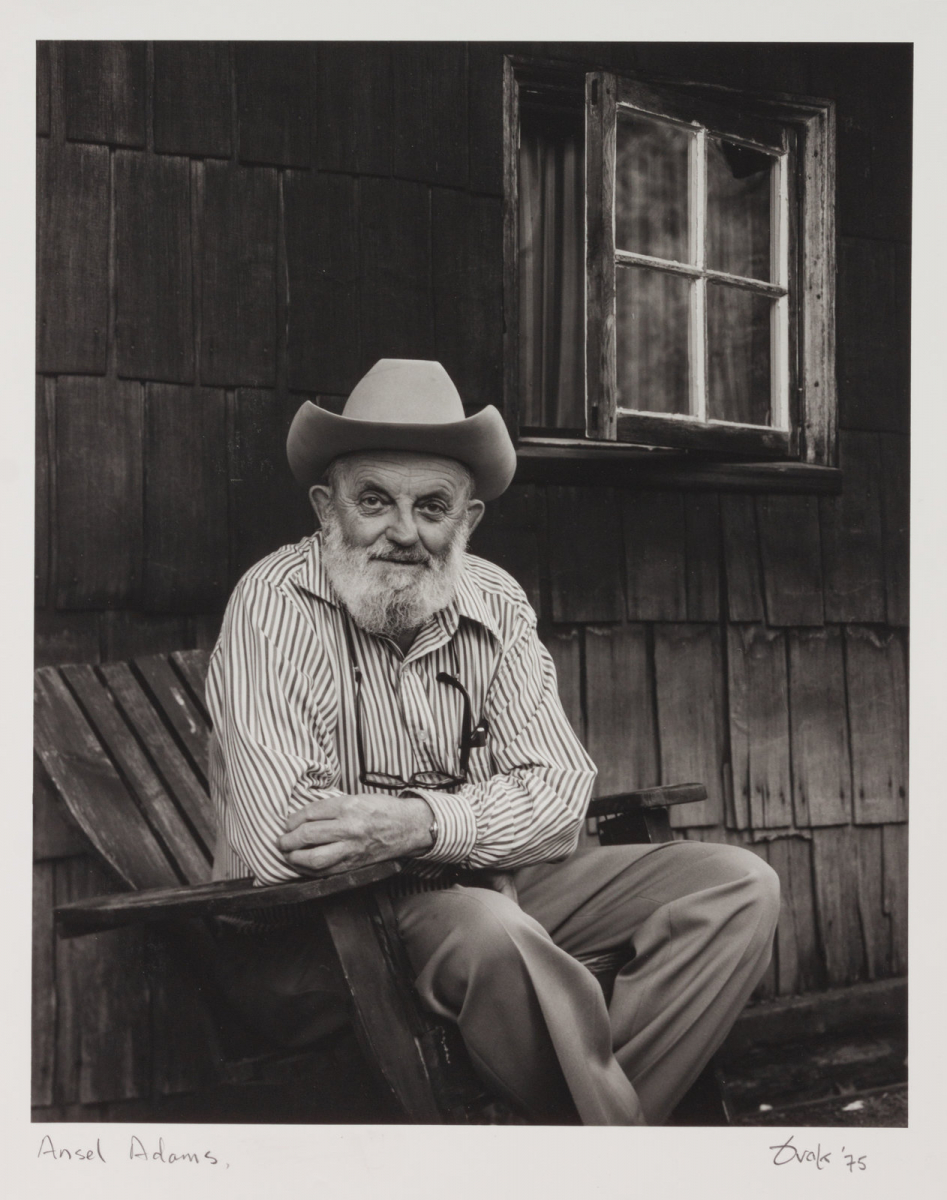
Portrait of Ansel Adams
Ovak Arslanian
gelatin silver print
9.75 x 8 inches (L x W)
https://hindmanauctions.com/auctions/835
Lot 203
From the catalog:
Ovak Arslanian (20th Century)
1975
signed Ovak and dated (lower right); titled (lower left)
Property being sold to benefit the Mission and Vision of the Couse-Sharp Historic Site, Taos, New Mexico
Provenance: Private Collection
In his 1975 Portrait of Ansel Adams, New York portrait photographer Ovak Arslanian captures another famous photographer, Ansel Adams, in a frank, casual moment. Adams, seated, looks right and leans in, arms lightly crossed, as if he has just thought of a good “just between you and me” story, a story you’ve never heard about some adventure in Yosemite, one with, perhaps, just a hint of gossip that begins, “Confidentially...”
-James D. Balestrieri
est $700-900
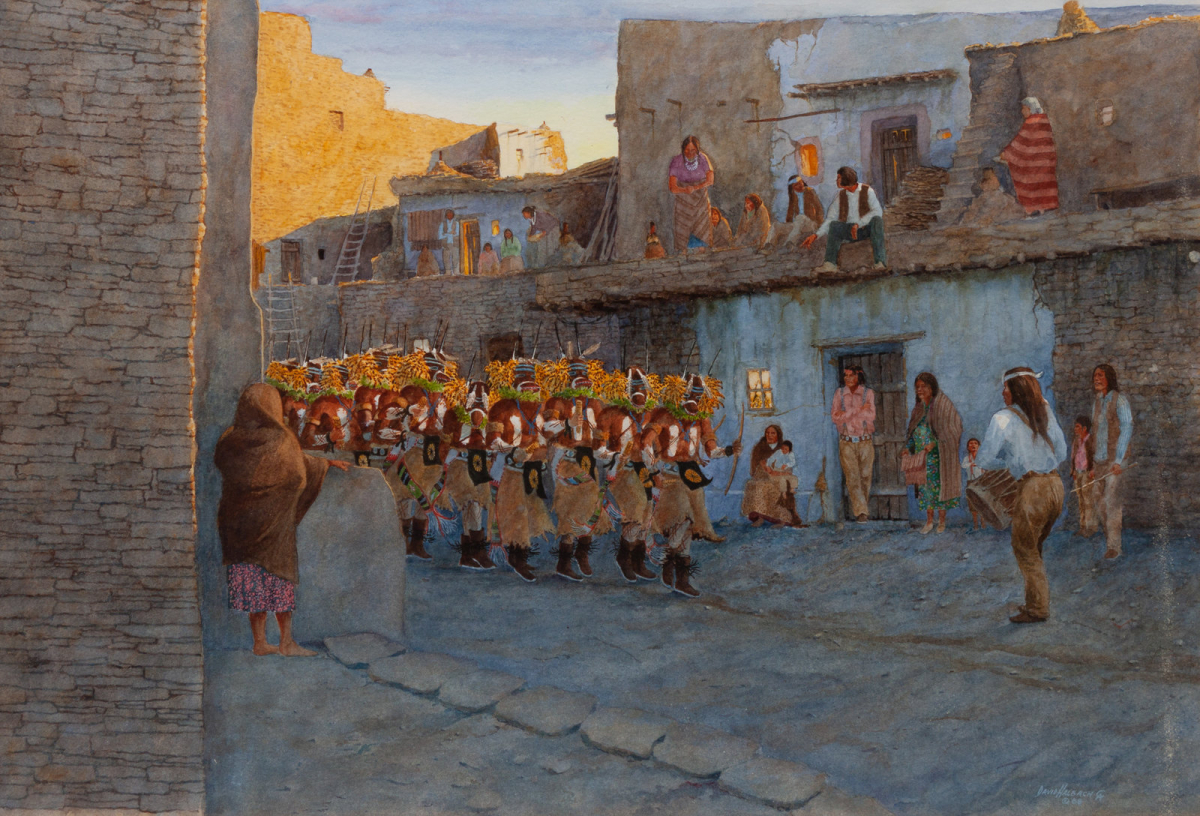
Pueblo Dance-Laqan Ceremony
David Halbach
watercolor
20 x 30 inches (L x W)
https://hindmanauctions.com/auctions/835
Lot 195
From the catalog:
David Halbach (American, b. 1931)
1968
signed David Halbach and dated (lower right)
Property being sold to benefit the Mission and Vision of the Couse-Sharp Historic Site, Taos, New Mexico
Provenance: Settler’s West, Tucson, Arizona; Private Collection, acquired from the above in 2008
“There is a lot of truth in ‘Paint what you know,’” David Halbach says, and taking this advice has served him well throughout his career. Halbach studied at the Chouinard Art Institute in Los Angeles under Millard Sheets, and, after a stint in the Navy, went to work as a Disney animator, where he counted Lady and the Tramp among his credits. Halbach turned to teaching and easel painting and has made a particular study of Hopi ceremonies in his atmospheric watercolors that find echoes in artists as disparate as Donald Teague and Peter Moran. The Laqan, or “Squirrel” Katsina, appears in dances and can also “challenge any woman to take anything from him that she thinks worth having.” (Wright, Kachinas, p. 112)
-James D. Balestrieri
est $3,000-5,000
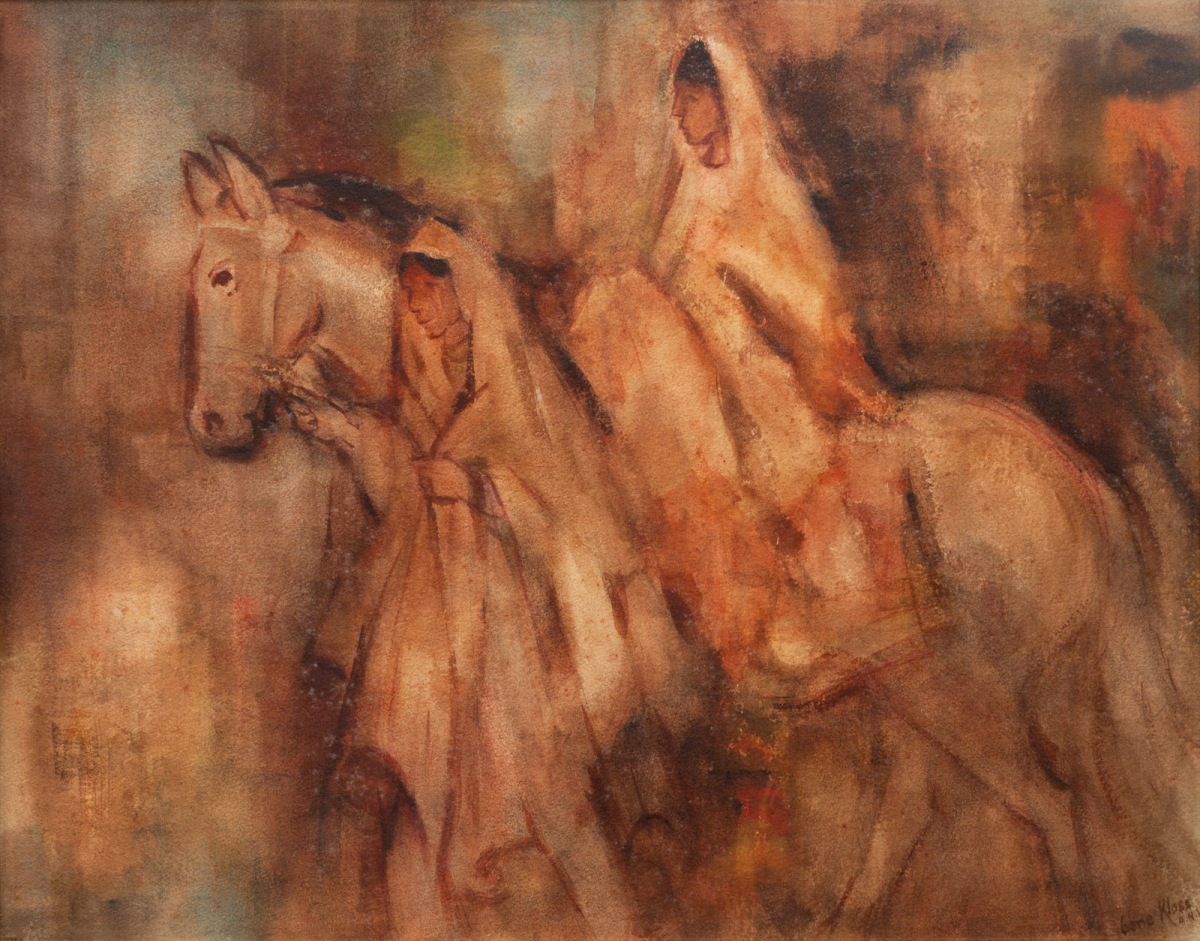
Return to the Pueblo
Gene Kloss
watercolor and pastel on paper
21 x 27 inches (L x W)
https://hindmanauctions.com/auctions/835
Lot 194
From the catalog:
Gene Kloss (American, 1903-1996)
signed Gene Kloss (lower right)
Property being sold to benefit the Mission and Vision of the Couse-Sharp Historic Site, Taos, New Mexico
Provenance: Donated by Ernest and Virginia Couse Leavitt, Taos, New Mexico
Best known for her black and white etchings of Pueblo ceremonies, Gene Kloss’s paintings are few and rarely appear on the market. Where her etchings are spiky and deep with chiaroscuro, as if she is trying to capture a moment before it is gone, her paintings, as seen here in Indian Figure on Horse, approach the sculptural, as if the figures and horse press against a drapery, proceeding in shallow relief across a temple frieze.
-James D. Balestrieri
est $4,000-6,000
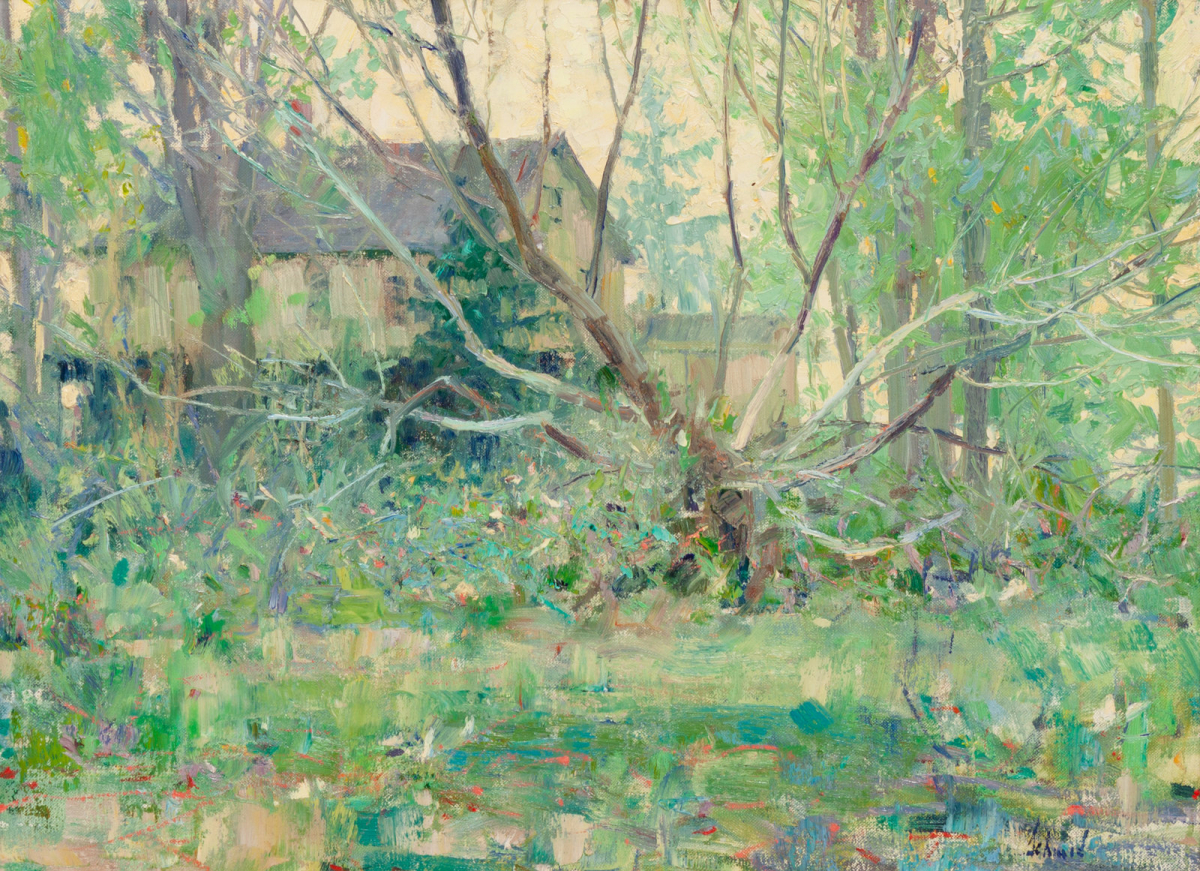
Spring Morning in Gaylordsville
Richard Schmid
oil on canvas
18 x 24 inches (L x W)
https://hindmanauctions.com/auctions/835
Lot 189
From the catalog:
Richard Schmid (American, b. 1934)
signed Schmid (lower right)
Property being sold to benefit the Mission and Vision of the Couse-Sharp Historic Site, Taos, New Mexico
Provenance: Michael Wigley Galleries, Santa Fe, New Mexico; Private Collection, acquired from the above
Richard Schmid has often been called an artist’s artist because of the popular classes he teaches as well as the instructional books and videos he has created. In his own work, Schmid has developed a personal poetic approach to realism, and although he is perhaps best known for his nudes and oral still life paintings, he is also a superb painter of landscapes, as seen here in Spring Morning in Gaylordsville, a scene from the Connecticut town where Schimd and his family once resided. Balancing lights and darks, thins and thicks, and keeping his palette cool and limited, Spring Morning in Gaylordsville becomes an ode to the reemergent year, where the structure peeking through the trees, in the light that falls on it, is at one with the process of renewal. You can almost hear the birdsong and the natural world yawning as it awakens.
-James D. Balestrieri
est $8,000-12,000
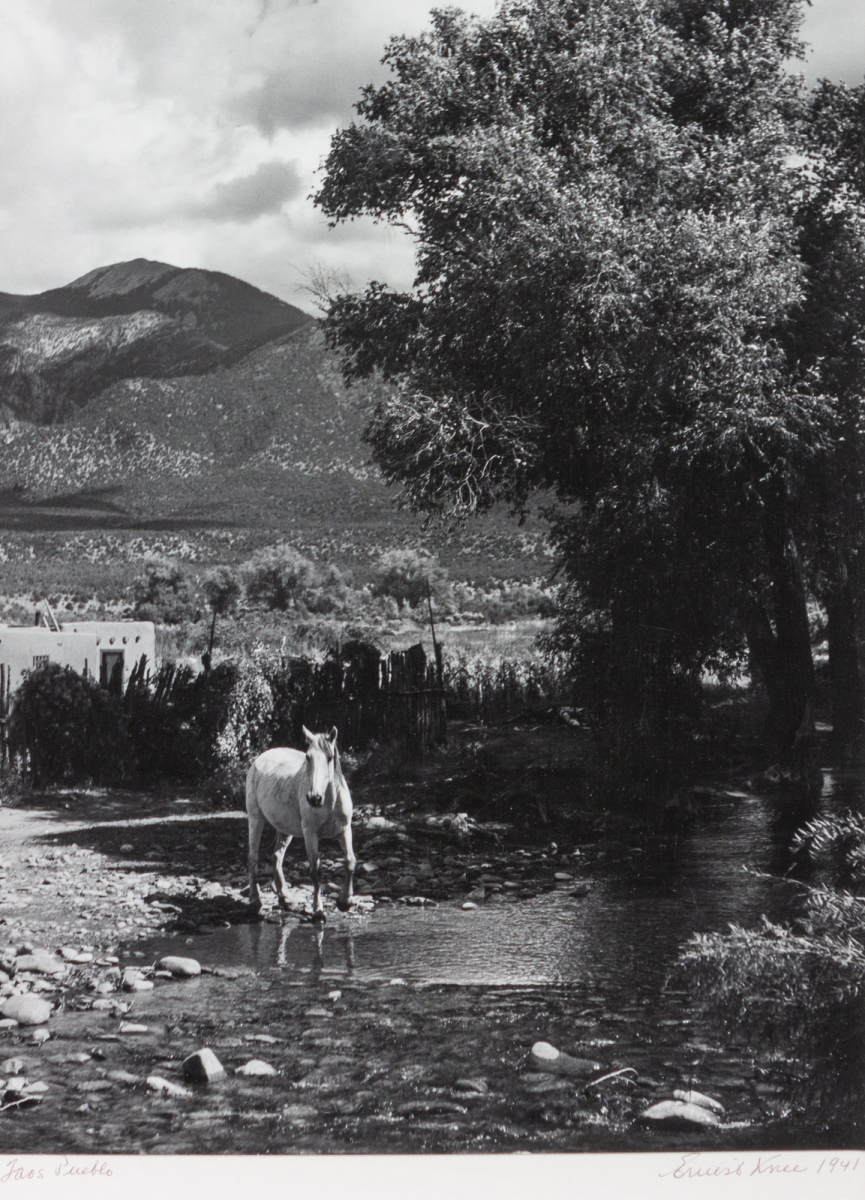
Taos Pueblo
Ernest Knee
gelatin silver print
13.5 x 10.25 inches (L x W)
https://hindmanauctions.com/auctions/835
Lot 201
From the catalog:
Ernest Knee (American, 1907-1982)
1941
signed Ernest Knee and dated (lower right); titled (lower left)
Property being sold to benefit the Mission and Vision of the Couse-Sharp Historic Site, Taos, New Mexico
Provenance: Private Collection
Though this photograph is titled Taos Pueblo, the actual pueblo, a corner of which peeks in at left, is almost incidental to the image. In fact, looking at the other elements--the tree, stream, horse, mountains, and sky, Knee suggests that Taos Pueblo is in nature, part of a larger world, and that the ramshackle fence is more of a gesture than a boundary. Indeed what dominates here are those things that can’t--or shouldn’t--be tamed, the freedom of the horse and the course of the stream, the ways in which trees grow and clouds move and mountains form.
-James D. Balestrieri
est $700-900
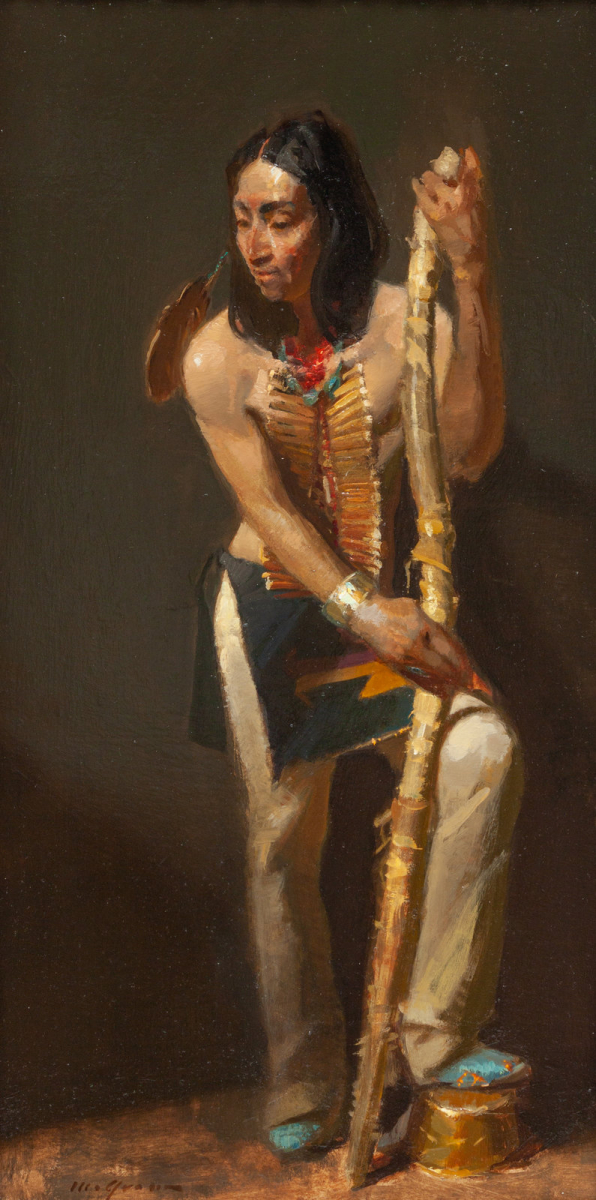
The Walking Stick
Sherrie McGraw
oil on canvas
24 x 12 inches (L x W)
https://hindmanauctions.com/auctions/835
Lot 192
From the catalog:
Sherrie McGraw (American, b. 1954)
2021
signed McGraw (lower left)
Property being sold to benefit the Mission and Vision of the Couse-Sharp Historic Site, Taos, New Mexico
Provenance: Donated by the artist
Sherrie McGraw studied in New York at the Art Students’ League (where she has also taught) and at the New York Academy. A classical realist by training, McGraw is deeply interested in “abstract realism,” where, as she puts it, “subject matter is a vehicle—not the reason—for painting.” The Walking Stick shows how McGraw’s investment in paint quality, the rhythms of color, and in the arrangement of abstract forms that constructs a harmonious representation. Consider the gold bucket and the bracelet, the touches of turquoise in the moccasins and in the beaded necklace, and in the zig-zag yellow on the stick and in the breechcloth.
-James D. Balestrieri
est $5,000-7,000
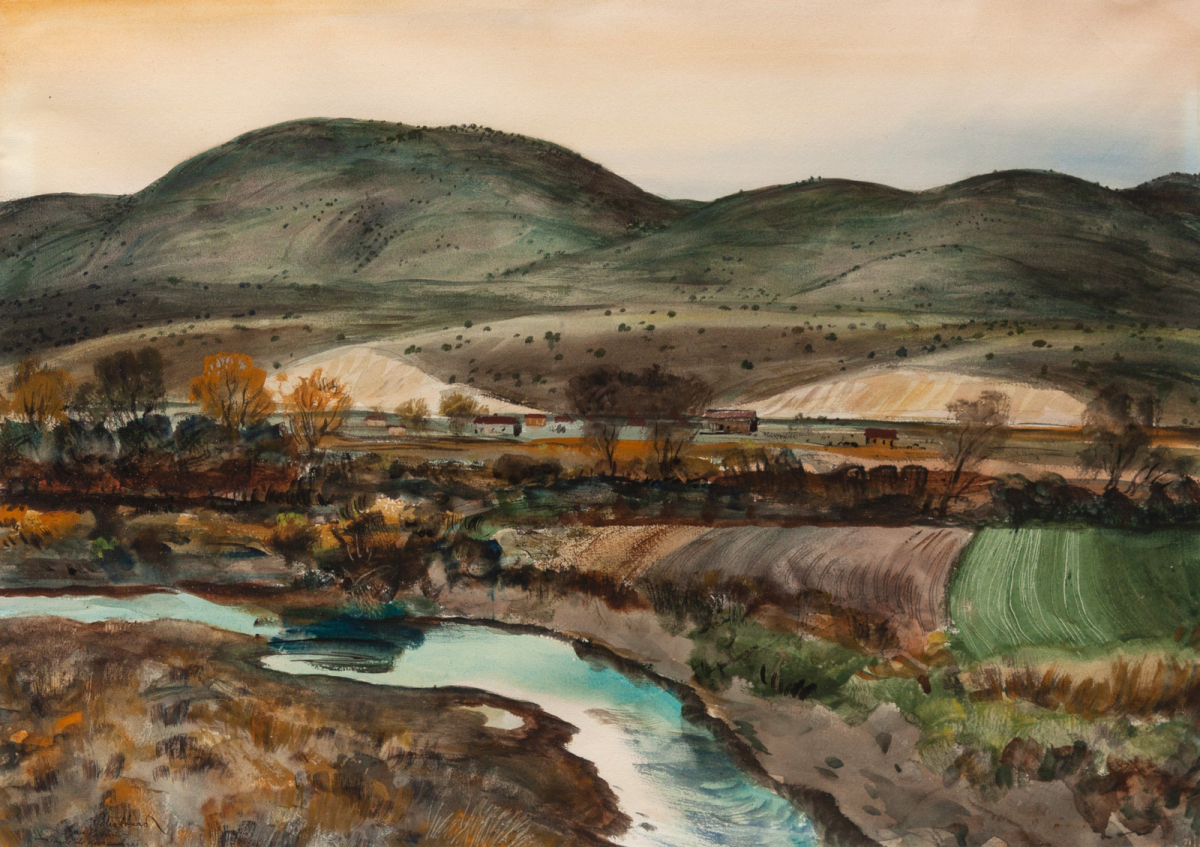
Una Tarde Noviembre
Peter Hurd
watercolor
18 x 24 inches (L x W)
https://hindmanauctions.com/auctions/835
Lot 197
From the catalog:
Peter Hurd (American, 1904-1984)
signed Peter Hurd and titled (lower left)
Property being sold to benefit the Mission and Vision of the Couse-Sharp Historic Site, Taos, New Mexico
Provenance: The Artist; Henriette Wyeth Hurd, wife of artist, San Patricio, New Mexico; Private Collection, acquired from the above
Peter Hurd studied with N.C. Wyeth and went on to marry Wyeth’s daughter Henriette, a very fine painter in her own right. Born in New Mexico, Hurd settled in the town of San Patricio, on what he would eventually call Sentinel Ranch. Hurd’s work as a combat artist for the Air Force and Life magazine during World War II convinced him to make watercolor his principal medium. San Patricio, Una Tarde Noviembre has the tonal looseness and light touch that would become a hallmark of Hurd’s work. Saturated areas alternate with dry brush technique, and Hurd uses the tip of the brush handle to etch furrows into the turned earth. In an early catalogue for an exhibition of Hurd’s New Mexico scenes, Macbeth Gallery director John J. Cunningham wrote, Hurd “has put down the result of his observations in terms that are affectionate, but never sentimental; impressions which are not mere sign posts pointing to that countryside, but invitations to share and enjoy a land unspoiled by the anachronisms of modern wayside architecture.”
-James D. Balestrieri
est $7,000-9,000
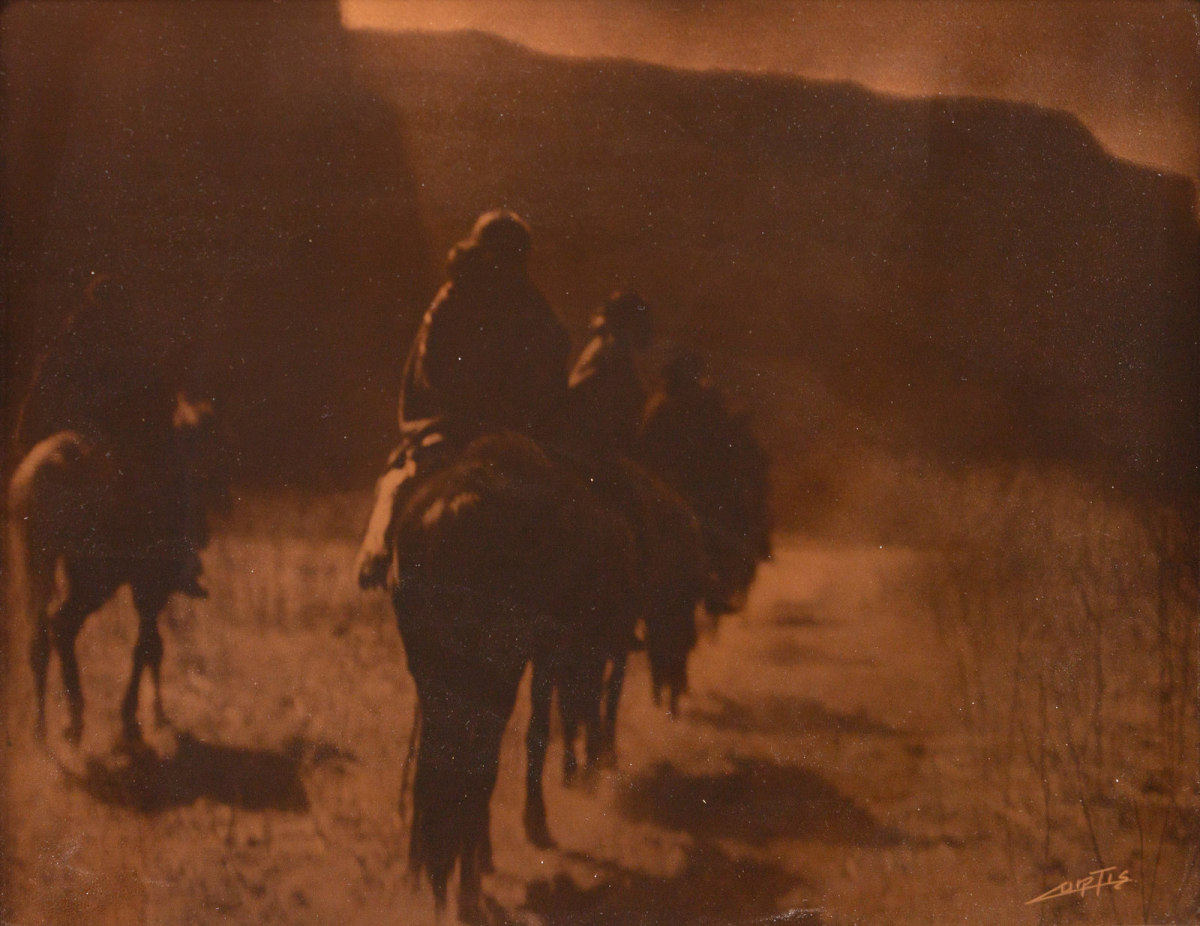
Vanishing Race
Edward Curtis
orotone
11 x 14 inches (L x W)
https://hindmanauctions.com/auctions/835
Lot 196
From the catalog:
Edward Sheriff Curtis (American, 1862-1952)
signed Curtis (lower right)
Property being sold to benefit the Mission and Vision of the Couse-Sharp Historic Site, Taos, New Mexico
Provenance: Donated by The Rainbow Man, Santa Fe, New Mexico
By 1895, Seattle photographer Edward Curtis was the flavor of the month whenever anyone needed a portrait or a bride or debutante. But once he saw and photographed Princess Angeline, the last surviving daughter of Chief Seattle--for whom the growing, bustling city was named--his ambition took a turn. Curtis would spend thirty years living among and photographing Native Americans from Alaska to Mexico. It would cost him dearly, but his project, the monumental The North American Indian, remains unmatched in its sweep and beauty. The Vanishing Race is the most famous Curtis image. Mounted Natives move away from us, getting ever smaller, epitomizing the “Vanishing Race” myth that posited that Native Americans were, tragically but inevitably, doomed to vanish from the earth. Time has, of course, proven it a myth, yet it inspired and drove Curtis. This Vanishing Race is a goldtone, or orotone, a rare example of a process invented by Curtis, in which the lighter areas of the glass plate give off a softly reflective, golden hue.
-James D. Balestrieri
est $2,000-3,000
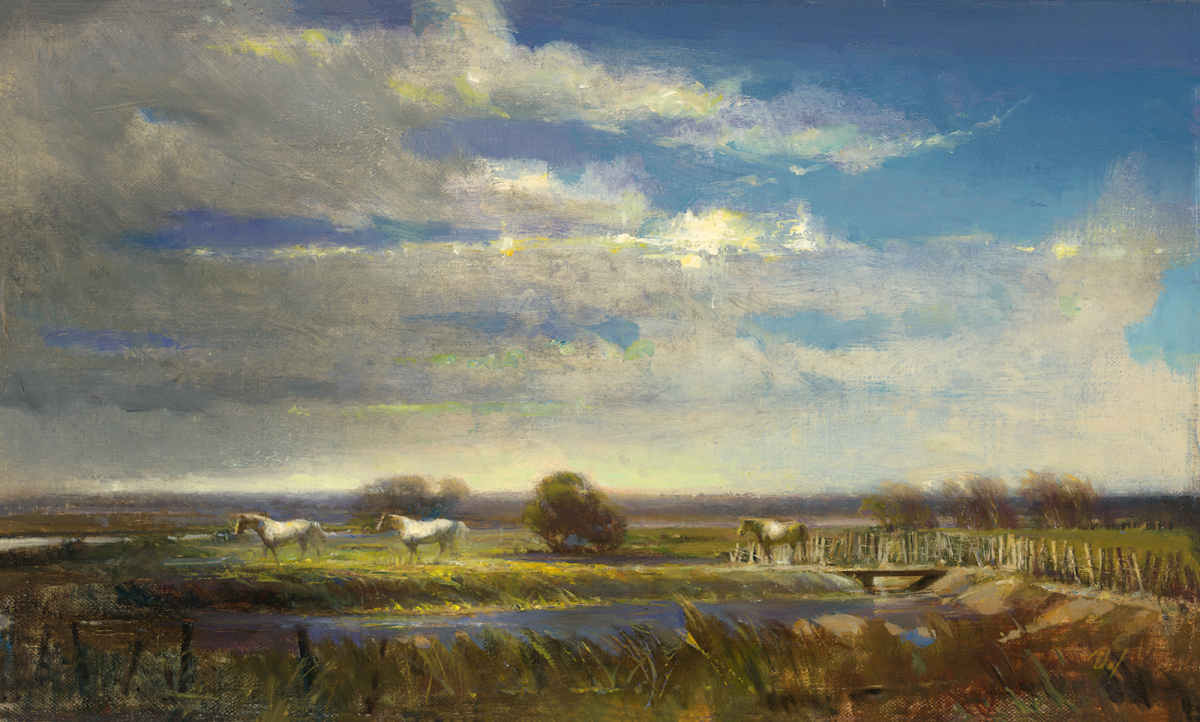
Wild Horses
David A Leffel
oil on canvas
12 x 20 inches (L x W)
https://hindmanauctions.com/auctions/835 Lot 190
From the catalog:
David A. Leffel (American, b. 1931)
2013
signed DAL (lower right)
Property being sold to benefit the Mission and Vision of the Couse-Sharp Historic Site, Taos, New Mexico
Provenance: Donated by the artist
David Leffel’s beautiful oil, Wild Horses, is reminiscent of the early Hudson River School, and Asher Durand in particular. It also recalls Worthington Whittredge’s paintings of the Western Plains in the Civil War era. Leffel finds his inspiration in the painting of the Dutch Golden Age, in Rembrandt and Vermeer, but here the wildness is Western, as the three white horses, lit by a break in the clouds, move away from the fences, towards the wild gray weather that looms at left.
-James D. Balestrieri
est $10,000-12,000
